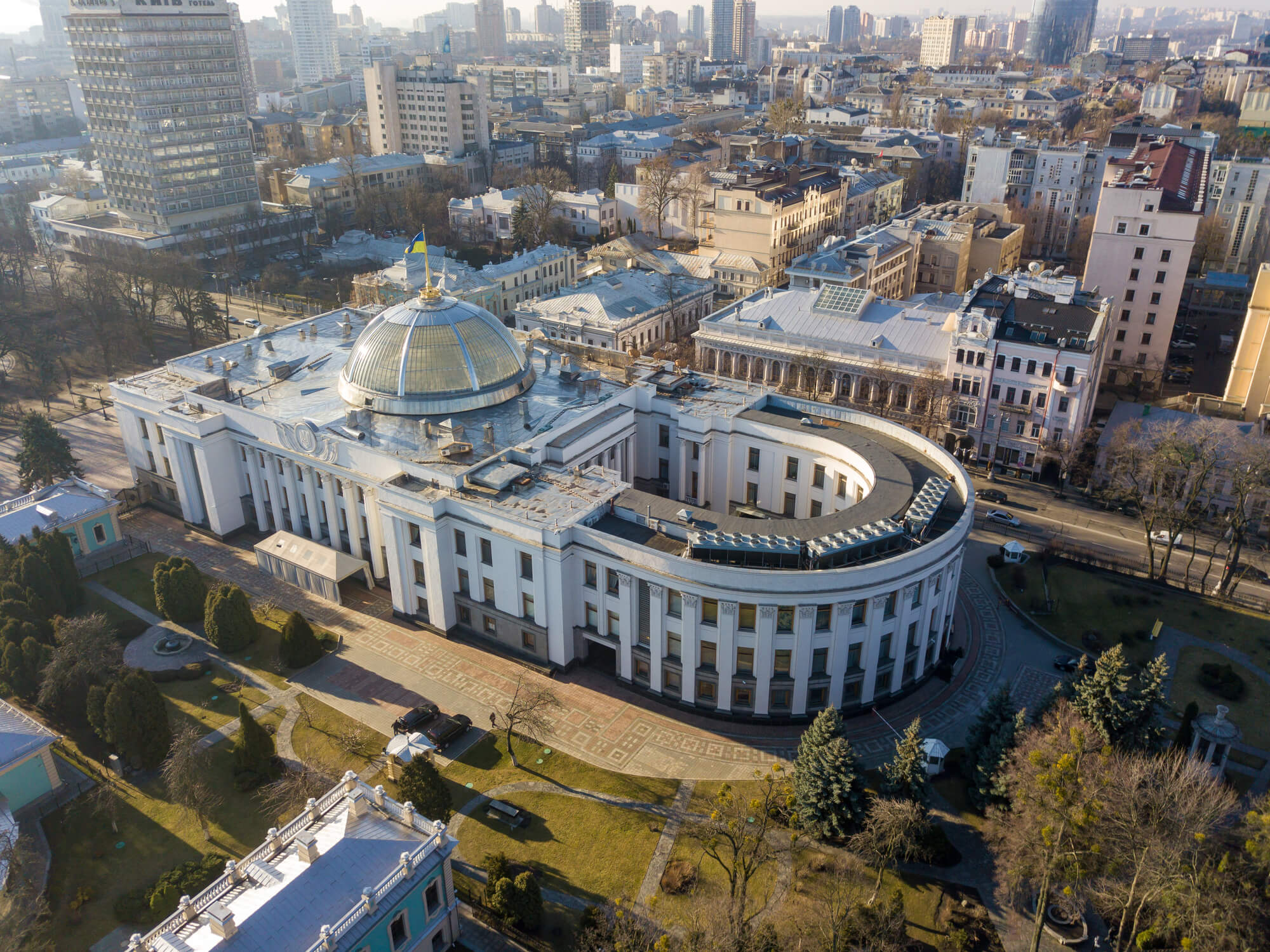Ukraine has a mixed parliamentary-presidential system in which both the prime minister and the president have control over various parts of the executive branch of government. The president is directly elected by the people, while the prime minister is appointed by the parliament. The president has authority over the heads of the local governments and over some parts of the national government, while the prime minister controls most of the national government. This mixture of presidential authority over local governments with national ministers who are accountable to the parliament is particularly unique to Ukraine. This article is analyzing which constitutional reform can work best in Ukraine.
Ukraine’s recurrent political crises
On April 10, 2016 the prime minister of Ukraine Arseniy Yatsenyuk announced his resignation, hinting that he might have an ambition to run for president in the future. Mr. Yatsenyuk endorsed the speaker of the parliament Volodymyr Groysman, considered to be loyal to the president of Ukraine, Petro Poroshenko, as his successor.
Recurrent political crises, short-lived governments, and pervasive corruption are a norm in Ukraine. Equally normal is political infighting between the president and the prime minister, except when the president consolidates most of the real authority. Strong presidents, however, tend to abuse their power and can be checked only by street protests, which culminate in Maidans that occasionally topple the president. Frustrated with the political infighting and the slow progress with reforms and eliminating corruption since the most recent Maidan, the Ukrainian public has been actively discussing what the best democratic system would be for Ukraine. There is good reason to believe that fundamental constitutional changes may be needed for Ukraine to escape from the systematic pattern of political crises and endemic corruption.
Flaws in the Constitution?
Ukraine has a mixed parliamentary-presidential system in which both the prime minister and the president have control over various parts of the executive branch of government. The president is directly elected by the people, while the prime minister is appointed by the parliament. The president has authority over the heads of the local governments and over some parts of the national government, while the prime minister controls most of the national government. This mixture of presidential authority over local governments with national ministers who are accountable to the parliament is particularly unique to Ukraine.
This confounding of powers creates ample opportunities of political infighting and finger pointing. The President’s power to appoint local administration heads is particularly dysfunctional. Appointed by the president, these officials have little incentive to do what voters want; instead they do what the president wants. At the same time, the prime minister controls most of the ministers of the national government. As the president and the prime minister compete to gain more power, the national and the local governments are caught in the crossfire with different level officials sabotaging each other’s actions.
The other fundamental problem is that Ukraine greatly needs a national leader who will be dedicated to fighting corruption in government. The Constitution of Ukraine gives the president the power to appoint, subject to the approval by the parliament, the general prosecutor and the head of the security services. But for the President to fill the role of a leader committed to the fight against corruption it would be necessary to remove the president from responsibility for staffing the administration. Any leader would find it politically difficult to investigate charges of corruption by officials whom the leader has appointed.
The people of Ukraine could look to their president as someone willing to preside over anti-corruption investigations if the power of appointment over executive officials were fully transferred to the prime minister chosen by the Verkhovna Rada and to local governors chosen by local councils. This would also decrease the opportunities for political infighting and improve accountability in the government by making it impossible for the president and the prime minister to blame each other for failures of the executive branch.
Comparing presidential and parliamentary systems
Democracies in the world are divided between presidential and parliamentary systems. Of course, there is no perfect democratic system. There are trade-offs between advantages and disadvantages of different democratic systems. In the next two sections, we offer a broad comparative discussion of presidential and parliamentary systems and their dependence on different kinds of voting rules for electing the legislature. (This discussion is summarized in a Table at the end of this article.)
In presidential democracies, the chief of the executive branch of government (the president) is elected independently of the legislative branch of government (the parliament). The Parliament thus does not have the power to vote down the president, except via impeachment, under exceptional circumstances.
In a parliamentary system, the executive (the prime minister) is voted in by the parliament, which also has the power to bring down the government via a failed vote of confidence. Thus there is no constitutional separation of executive and legislative power in parliamentary systems.
When a majority coalition controls the government in a parliamentary system, it can make decisions fast and efficiently. The prime minister’s dependence on a legislative majority increases his incentive to maintain a reputation for reliably distributing benefits of power to the legislators who support him. The members of a governing parliamentary coalition can also be induced to support a bill by making it a confidence vote on which the continuation of the government would depend. As a result parliamentary parties tend to be more disciplined and cohesive than parties in a presidential system.
Topic of the week: Constitutional Design
5 Reasons to Believe that Ukraine Needs a Parliamentary System of Government (Rostyslav Averchuk, BA in Philosophy, Politics, and Economics at the University of Oxford, MA in Finance at Lviv Academy of Commerce)
Party Switching: to Ban or not to Ban (Rostyslav Averchuk, BA in Philosophy, Politics, and Economics (University of Oxford))
In a presidential system, the president is more likely to distribute patronage benefits to the contributors who can support his re-election. Then special-interest “pork barrel” provisions must be attached to legislation to win the support of legislators who feel less party discipline than in a parliamentary system.
In a parliamentary system, if no party has a majority in the legislature then government can be paralyzed until a collection of parties that together have a majority of seats can reach an agreement to form a government. This often happens for a few weeks after an election, but a new governing coalition can usually be formed quickly. In a presidential system, however, such a paralysis of decision-making can continue throughout the entire term of a president if the president’s party does not control the legislature, as has regularly occurred in the US in recent decades.
Parties in a parliamentary coalition can threaten to bring down the government if they do not get enough benefit from participating in the coalition. Such threats in a parliamentary system can create a risk of repeated government crises and prolonged periods without a working government. But the latter risk can be minimized by a constitutional rule called a “constructive vote of no-confidence,” whereby a parliamentary government falls only when there is an alternative majority to replace it. This rule was first introduced in Germany and is now used in many countries.
There are some examples of well-functioning presidential regimes where the powers of the executive are limited, as the legislature has effectively checked the tendency of presidents to increase their power. Examples that come to mind are the US and Chile. But most presidential regimes in the world have had a tendency toward autocracy, as the presidents regularly push to extend the power of their office until it effectively controls all branches of government. This can lead to abuses of power by the incumbent president who feels his powers are unchecked. Russia, Turkey are recent examples. All former FSU countries adopted presidential regimes, except Moldova and the record of those countries is mostly not good compared to the parliamentary regimes of Central Europe and Western Europe. Ukraine’s history in the last 25 years is part of that bad experience.
Some countries, including Ukraine, have used a mixed semi-presidential system in which power is shared between an elected president and a prime minister who is responsible to the legislature. Advocates of such semi-presidential systems hope to combine the best of presidential and parliamentary systems, but critics worry that they may be combining the worst of both systems instead. Certainly any semi-presidential system can create a basic conflict within the executive between the president and prime minister.
One of the first semi-presidential systems was in the German Weimar republic (1919-1933), which collapsed when the Nazis rose to power before World War II. France today is often considered a semi-presidential system, but France may be better categorized as a parliamentary system, because (under the accepted norms of “cohabitation” in France) the prime minister effectively controls the government when the legislature is controlled by a party other than the president’s.
Dependence on the electoral system
In some countries, legislators are elected by a system of proportional representation in which seat shares of the different parties are more or less proportional to the vote shares. In other countries, legislators are elected by a majoritarian electoral system in which there is only one seat per district and it goes to the candidate who gets the most votes.
A proportional representation system tends to generate more small parties in the legislature, which can increase the problem of forming a governing coalition after an election in a parliamentary system. Decisions are also generally slower and involve compromises that are often inefficient. Government stability is often lower as one or more of the parties can threaten to stop supporting the government.
But a majoritarian electoral system can leave substantial minority groups with little or no representation in the legislature if they are not sufficiently concentrated geographically to form a majority in some district. Furthermore, majoritarian electoral systems can increase the problem of geographical favoritism, against those districts whose representatives are not part of the governing coalition. This latter problem can be reduced by decentralizing substantial powers to local governments, so that people can be confident of local government services even when they are outside the geographical basis of the governing national coalition.
To avoid these problems of alienating underrepresented minorities, proportional representation is commonly preferred in parliamentary systems. A parliamentary system with proportional electoral rule tends to be more inclusive than one with majoritarian rule. Another advantage of proportional representation is that it will tend to favor universalistic over particularistic public goods, as electoral competition is over gaining votes in general, not just over gaining votes in particular pivotal districts. This is also good for protecting minorities.
In presidential systems, however, the fragmentation of parties under proportional representation can make the legislature less able to check the power of the president.
Given the common danger of an unchecked president making himself an autocrat, many believe that presidential democracy works better when the legislature is elected by a majoritarian electoral system, as in the US and Chile.
What can work best in Ukraine?
In Ukraine’s semi-presidential system, national ministers are accountable to Verkhovna Rada but local government heads are appointed by the president. This division of power has created severe problems for Ukraine in at least three ways. First, it has created the continuing potential for intra-governmental conflict between national ministers and local government heads. Second, the voters may understand that the President would be less concerned about corruption by his appointed local officials in regions where he gets fewer votes, and so it may become rational for virtually everybody to oppose the President in such regions that are outside his expected domain of support. Thus, this provision has subtly but systematically increased the regional polarization of presidential politics in Ukraine.
Third, presidential control of local administration has reduced the ability of the voters to find promising new national leaders in local governments. In most successful democracies, elected heads of local governments can prove their qualifications to strong competitive candidates for national leadership by providing better public service in local government. But when the President of Ukraine can appoint and dismiss heads of local government, he may use this power to eliminate any local leaders with any chance of becoming strong competitive candidates against him. Thus, Ukraine’s semi-presidential system has tended to weaken democratic competition.
What Ukraine needs most today is a national leader who is truly dedicated to uncovering corruption everywhere. When the President and Prime Minister both appoint officials for large parts of the government, then both of them could be embarrassed by any major corruption scandal. If the people of Ukraine want to have a President who is fully motivated to expose corruption everywhere, then the President should be fully separated from the appointment of government officials. This is a strong argument for moving toward a true parliamentary system, making national government officials fully accountable to the Verkhovna Rada, and making local government officials in the oblasts and rayons fully accountable to their respective oblast or rayon councils.
Austria may be a good example for Ukraine to consider. The President of Austria is directly elected by the people, but has only very limited power over the government. This separation from direct responsibility for government has enabled presidents of Austria to become honest articulate advocates of the broad public interest in the country. As a result, Austrian presidents tend to become very popular and are regularly re-elected with large majorities (even when the President’s party does not do well in other elections).
The above arguments for reducing presidential powers and recentralizing local governments do not depend on any reform of Ukraine’s electoral system. But some have argued for an electoral reform that would increase the seats allocated by proportional representation from 50% of the Verkhovna Rada to 100%. If the single-member districts were eliminated, then it would become more important to have open party lists that allow voters to designate which individuals they want seated first, among those nominated by the party for their region. If proportional representation was applied in large electoral districts with 20 or more representatives, then any coalition of parties that could form a governing majority in the Verkhovna Rada would be very likely to include at least some representatives from every electoral district. Thus, electoral reform could also help to reduce regional polarization in Ukraine.
The ultimate power to decide any question about constitutional reform in Ukraine must belong democratically to the citizens of Ukraine. As a general rule, however, current elected leaders can be expected to resist any changes that would reduce their powers of their own offices, and so constitutional reforms can rarely succeed without strong popular demand. Such resistance to constitutional reform is necessarily not a bad thing, because stability in government is important, and so constitutions should be changed only when there is great need. This essay is offered as testimony to the people of Ukraine that now may be a time when questions of constitutional reform are truly worth very serious consideration.
Table. Trade-offs between different democratic political institutions
|
Presidential
|
Parliamentary
|
|||
|
Majoritarian elections
|
Pros:- strong separation of powers possible
|
Cons:- Excessive concentration of powers in hands of president;- Less party discipline, more pork barrel politics- possible paralysis of government
|
Pros:-fast and efficient decision-making-strong party discipline
|
Cons:- no separation of powers between executive and legislature- minorities can be durably excluded from government- some minorities and localities may be too favored.
|
|
Proportional elections
|
Pros:- as above- strong separation of powers possible
|
Cons:- as above but more fragmentation gives more power to the president and makes clientelism even worse
|
Pros:-inclusive majorities-strong party discipline-universalistic public goods
|
Cons:-no separation of powers between executive and legislature- slower and less efficient decision-making-excess power to minority government partners.- less government stability
|
Attention
The authors do not work for, consult to, own shares in or receive funding from any company or organization that would benefit from this article, and have no relevant affiliations





